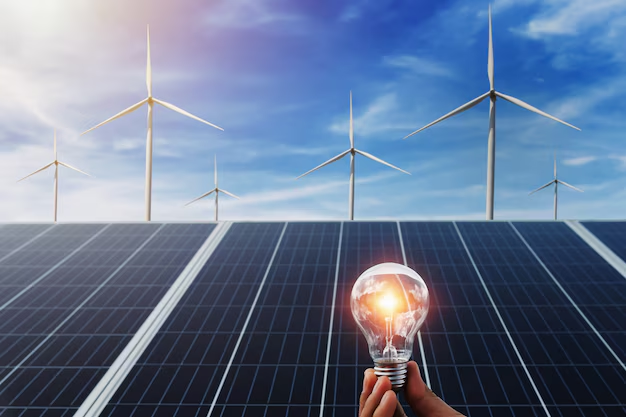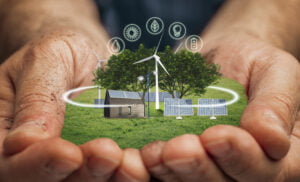In today’s rapidly advancing world, the importance of reliable power management cannot be overstated, especially in remote and off-grid locations.
These areas, often characterized by their isolation and lack of connection to conventional power grids, face unique challenges that make the provision of consistent and sustainable energy a complex task.
Whether it’s rural communities, remote research stations, or off-grid industries, the need for innovative power management strategies is critical to ensure the well-being and productivity of these regions.
Power management in remote and off-grid locations involves more than just supplying electricity; it requires a comprehensive approach to address the environmental, logistical, and economic hurdles that are inherent in these settings.
With limited access to traditional energy infrastructure, these areas must rely on alternative and renewable energy sources, sophisticated storage solutions, and efficient distribution methods to meet their energy needs.
This blog explores the various power management strategies that can be employed to tackle the unique challenges faced by remote and off-grid locations.
From renewable energy solutions and hybrid power systems to advanced energy storage technologies and smart microgrids, we will delve into the innovative approaches that are transforming the energy landscape in these isolated regions.
By examining real-world examples and emerging trends, we aim to highlight the potential for sustainable and resilient power solutions that can drive progress and improve the quality of life in remote and off-grid communities.
Understanding Remote and Off-Grid Power Needs
Remote and off-grid locations span a wide range of environments, including isolated rural communities, remote industrial sites, research stations in extreme climates, and off-grid islands.
These areas share common characteristics: they lack access to centralized power grids and often face significant challenges in obtaining reliable and consistent energy. Understanding the specific power needs of these locations is crucial for developing effective management strategies.
Definition and Examples of Remote and Off-Grid Locations
Remote and off-grid locations are areas that are not connected to the main electrical grid.
These locations often rely on localized power generation methods to meet their energy demands. Examples include:
- Rural Communities: Villages and small towns situated far from urban centers and grid infrastructure.
- Industrial Sites: Mining operations, oil and gas extraction sites, and construction projects in remote areas.
- Research Stations: Facilities in extreme environments such as the Arctic, Antarctic, or deep forests.
- Off-Grid Islands: Small islands that do not have undersea power cables connecting them to the mainland.
Typical Power Requirements and Consumption Patterns
The power requirements of remote and off-grid locations vary depending on their purpose and population. However, some common consumption patterns can be identified:
- Residential Needs: Basic household power for lighting, cooking, heating, and entertainment.
- Industrial Needs: Power for machinery, equipment, and processing operations.
- Institutional Needs: Energy for schools, hospitals, and administrative buildings.
- Research Needs Continuous power for scientific equipment, communication systems, and living quarters.
The demand for power in these locations can fluctuate based on factors such as population size, industrial activity, and environmental conditions.
For instance, energy demand in a remote village might peak during evening hours when families are at home, while an industrial site might have higher energy needs during operational hours.
Key Considerations for Power Management
Effective power management in remote and off-grid locations requires addressing several key considerations:
- Energy Source Availability: Identifying and utilizing local energy resources, such as solar, wind, or hydro, to reduce dependency on external supplies.
- Reliability and Stability: Ensuring consistent and reliable power supply despite environmental challenges such as extreme weather, geographical isolation, and resource variability.
- Scalability: Designing power systems that can be scaled up or down based on changing energy demands and population growth.
- Cost-Effectiveness: Balancing the initial investment, operational costs, and maintenance expenses to provide affordable energy solutions.
- Environmental Impact: Minimizing the ecological footprint of power generation and distribution to preserve the natural surroundings.
Understanding these power needs and considerations sets the foundation for developing and implementing tailored power management strategies that can effectively address the unique challenges of remote and off-grid locations.
Challenges in Power Management for Remote and Off-Grid Locations
Managing power in remote and off-grid locations presents a unique set of challenges that require innovative and adaptable solutions.
These challenges stem from a variety of factors, including geographical isolation, harsh environmental conditions, logistical difficulties, and economic constraints.
Understanding these obstacles is essential for developing effective power management strategies that ensure reliable and sustainable energy supply in these areas.
Limited Access to Conventional Power Grids

One of the primary challenges in remote and off-grid locations is the lack of access to centralized power grids.
The absence of a grid connection means that these areas cannot rely on the extensive infrastructure and consistent energy supply provided by national or regional power networks.
Instead, they must generate their power locally, which often involves higher costs and greater complexity.
Harsh Environmental Conditions
Remote and off-grid locations are frequently situated in environments that pose significant challenges to power management. These conditions can include:
- Extreme Weather: High winds, heavy snowfall, intense heat, and severe storms can damage equipment and disrupt power generation and distribution.
- Geographical Isolation: Mountainous terrain, dense forests, deserts, and other difficult landscapes can complicate the installation and maintenance of power systems.
- Limited Natural Resources: Some remote areas may lack adequate renewable energy resources such as sunlight, wind, or water, making it difficult to implement sustainable power solutions.
Transportation and Logistical Issues
The logistical challenges associated with transporting materials, equipment, and personnel to remote and off-grid locations can be considerable. These issues include:
- Access Routes: Poorly developed or nonexistent transportation infrastructure can hinder the delivery of essential components and maintenance supplies.
- High Transportation Costs: The expense of moving heavy and bulky equipment to remote sites can significantly increase the overall cost of power projects.
- Maintenance and Repairs: The difficulty of accessing remote locations can delay repair work and routine maintenance, leading to extended periods of power outages.
High Initial Investment and Maintenance Costs
Implementing power solutions in remote and off-grid locations often requires substantial initial investment.
The costs associated with setting up independent power generation systems, storage solutions, and distribution networks can be prohibitively high.
Additionally, ongoing maintenance and operational expenses can strain limited budgets. Specific cost-related challenges include:
- Capital Expenditure: The high upfront costs of renewable energy technologies, such as solar panels, wind turbines, and battery storage systems.
- Operational Expenditure: Regular maintenance, fuel costs (for hybrid systems), and the need for skilled technicians to manage and repair equipment.
- Economies of Scale: Smaller, isolated systems do not benefit from the cost efficiencies of large-scale grid-connected power systems, leading to higher per-unit energy costs.
Energy Reliability and Stability
Ensuring a stable and reliable energy supply in remote and off-grid locations can be challenging due to several factors:
- Intermittency of Renewable Sources: Renewable energy sources, such as solar and wind, are inherently intermittent, requiring robust storage solutions and backup systems to provide continuous power.
- Equipment Durability: Power generation and storage equipment must be durable and resilient to withstand harsh environmental conditions and prolonged use without frequent replacement.
- System Integration: Integrating various power sources and storage systems into a cohesive and reliable power management system requires advanced technology and expertise.
Addressing these challenges is crucial for the successful implementation of power management strategies in remote and off-grid locations.
By overcoming these obstacles, it is possible to provide sustainable, reliable, and cost-effective energy solutions that improve the quality of life and economic prospects for communities in these isolated areas.
Renewable Energy Solutions

Renewable energy solutions play a crucial role in providing sustainable and reliable power to remote and off-grid locations.
These solutions leverage natural resources, such as sunlight, wind, and water, to generate electricity, thereby reducing dependence on fossil fuels and minimizing environmental impact.
Implementing renewable energy systems in remote areas presents an opportunity to create resilient and self-sufficient energy infrastructures. Below are some of the most effective renewable energy solutions for remote and off-grid locations.
Solar Power
Solar Panels and Photovoltaic Systems Solar power is one of the most accessible and widely used renewable energy sources for remote and off-grid locations. Photovoltaic (PV) systems convert sunlight directly into electricity using solar panels. These systems are scalable, making them suitable for various applications, from small residential setups to larger community-based projects.
Battery Storage Solutions To address the intermittency of solar power, integrating battery storage solutions is essential. Batteries store excess energy generated during sunny periods and provide power during cloudy days or nighttime. Advances in battery technology, such as lithium-ion batteries, have made solar power systems more efficient and reliable.
Wind Power
Small-Scale Wind Turbines Wind power is another viable renewable energy solution for remote locations with adequate wind resources. Small-scale wind turbines can be installed to harness wind energy, converting it into electricity. These turbines are particularly effective in areas with consistent and strong winds.
Integration with Solar Systems Combining wind power with solar systems can create a hybrid renewable energy system that enhances reliability. When solar power is low, wind energy can compensate, and vice versa. This complementary relationship between wind and solar power helps ensure a continuous energy supply.
Hydro Power
Micro-Hydro Systems For remote locations with access to flowing water, micro-hydro systems offer an efficient way to generate electricity. These systems utilize the kinetic energy of water flow to produce power. Micro-hydro installations are typically small and can provide a steady and reliable source of energy, especially in mountainous or riverine areas.
Suitability and Implementation The feasibility of hydropower depends on the availability of water resources and the local topography. Implementing micro-hydro systems requires careful assessment of water flow rates and environmental impact. However, once established, these systems can provide consistent power with minimal maintenance.
Benefits of Renewable Energy Solutions
Environmental Sustainability Renewable energy solutions significantly reduce carbon emissions and environmental pollution compared to traditional fossil fuel-based power generation. By harnessing natural resources, these solutions contribute to a cleaner and healthier environment.
Economic Advantages While the initial investment for renewable energy systems can be high, they offer long-term economic benefits through reduced operational and maintenance costs. Over time, the savings from lower fuel expenses and minimal maintenance requirements can offset the initial expenditure.
Energy Independence and Security Renewable energy systems provide remote and off-grid locations with greater energy independence and security. By generating their power, these areas are less vulnerable to external energy supply disruptions and price fluctuations.
Scalability and Flexibility Renewable energy systems can be scaled up or down based on the specific energy needs of a location. This flexibility makes them suitable for a wide range of applications, from individual homes to entire communities.
Case Studies and Success Stories
Remote Villages in Africa Several remote villages in Africa have successfully implemented solar power systems to provide electricity for homes, schools, and medical facilities. These projects have improved the quality of life for residents, enabling better education, healthcare, and economic opportunities.
Island Communities in Southeast Asia Island communities in Southeast Asia have adopted hybrid renewable energy systems combining solar and wind power. These systems have reduced reliance on diesel generators, lowered energy costs, and minimized environmental impact.
Mountainous Regions in South America In mountainous regions of South America, micro-hydro systems have been deployed to harness the energy of rivers and streams. These systems have provided reliable electricity for remote communities, supporting local agriculture and small businesses.
By leveraging renewable energy solutions, remote and off-grid locations can achieve sustainable and resilient energy systems that meet their unique needs.
The adoption of solar, wind, and hydro power not only addresses the challenges of energy access but also promotes environmental stewardship and economic development.
Technological Innovations in Power Management
Technological innovations are revolutionizing power management in remote and off-grid locations, making it more efficient, reliable, and sustainable.
These advancements leverage cutting-edge technologies, including the Internet of Things (IoT), artificial intelligence (AI), and smart grid systems, to optimize energy generation, distribution, and consumption. Here are some of the key technological innovations transforming power management in remote and off-grid areas.
Internet of Things (IoT) and Smart Grid Technologies
IoT-Enabled Monitoring and Control The Internet of Things (IoT) has introduced new possibilities for monitoring and managing power systems in remote locations.
IoT devices equipped with sensors can collect real-time data on various parameters, such as energy production, consumption, battery status, and equipment health.
This data is transmitted to central monitoring systems, enabling operators to remotely monitor and control power systems, predict maintenance needs, and optimize performance.
Smart Grids Smart grid technology enhances the efficiency and reliability of power distribution in remote areas.
Smart grids use advanced communication networks and automation systems to dynamically manage the flow of electricity, balance supply and demand, and detect and respond to faults.
This technology can integrate various energy sources, including renewables, and improve grid resilience by quickly isolating and addressing issues.
Artificial Intelligence (AI) and Machine Learning
Predictive Maintenance AI and machine learning algorithms can analyze data from power systems to predict equipment failures and maintenance needs.
Predictive maintenance reduces downtime and extends the lifespan of equipment by identifying issues before they become critical.
In remote locations where access to maintenance personnel and spare parts is limited, this can significantly improve system reliability and reduce costs.
Optimization and Demand Forecasting AI can optimize power generation and consumption by analyzing patterns and predicting future demand.
Machine learning models can forecast energy needs based on historical data, weather conditions, and usage trends.
This enables more efficient scheduling of energy production and storage, minimizing waste and ensuring a consistent power supply.
Advanced Energy Storage Solutions
Next-Generation Batteries Advancements in battery technology are crucial for improving energy storage in remote and off-grid locations.
Next-generation batteries, such as lithium-sulfur, solid-state, and flow batteries, offer higher energy density, longer life cycles, and improved safety compared to traditional batteries.
These innovations make energy storage more efficient and reliable, ensuring a steady power supply even when renewable energy sources are intermittent.
Energy Management Systems (EMS) Energy Management Systems (EMS) use advanced algorithms to manage energy storage and distribution in real time.
EMS can optimize the charging and discharging cycles of batteries, balance loads, and integrate various energy sources to maximize efficiency.
This technology is particularly valuable in hybrid renewable energy systems, where it ensures seamless integration and operation.
Remote Monitoring and Control Systems
SCADA Systems Supervisory Control and Data Acquisition (SCADA) systems are widely used for remote monitoring and control of power systems.
SCADA systems provide real-time data visualization, alarm management, and control capabilities, allowing operators to monitor system performance, diagnose issues, and implement corrective actions from a central location.
Cloud-Based Management Platforms Cloud-based platforms offer scalable solutions for managing power systems in remote locations.
These platforms can aggregate data from multiple sites, provide comprehensive analytics, and support remote operations.
Cloud-based management enhances collaboration, data sharing, and decision-making, enabling more effective power management.
Renewable Energy Integration Technologies
Power Electronics Advancements in power electronics, such as inverters and converters, facilitate the efficient integration of renewable energy sources into power systems.
Modern inverters can manage multiple energy inputs, convert DC to AC power, and ensure stable voltage and frequency. These technologies enhance the compatibility and performance of renewable energy systems.
Microgrid Controllers Microgrid controllers are sophisticated devices that manage the operation of microgrids, which are localized power grids that can operate independently or in conjunction with the main grid.
Microgrid controllers optimize the use of available energy sources, balance supply and demand, and ensure reliable power supply. They are particularly valuable in remote and off-grid locations where grid connectivity is limited or unavailable.
Conclusion
Power management in remote and off-grid locations is a complex and multifaceted challenge that requires innovative and adaptable solutions. The unique obstacles presented by geographical isolation, harsh environmental conditions, and limited resources necessitate a strategic approach to ensure reliable and sustainable energy supply. By harnessing renewable energy solutions such as solar, wind, and hydro power, these areas can significantly reduce their dependence on fossil fuels and minimize their environmental impact.
Technological advancements, including IoT-enabled monitoring, smart grids, AI-driven optimization, and next-generation energy storage, are revolutionizing power management. These innovations enable more efficient energy generation, distribution, and consumption, making it possible to overcome the logistical and economic hurdles associated with remote power systems. Predictive maintenance, advanced energy storage solutions, and remote monitoring capabilities further enhance the reliability and longevity of these systems.
The successful implementation of renewable energy solutions and technological innovations in remote and off-grid locations is not just a technical achievement but a transformative force for communities. It brings energy independence, economic opportunities, and improved quality of life to areas that have long been underserved by traditional power infrastructures. The integration of these cutting-edge technologies ensures that even the most isolated locations can enjoy a steady, sustainable, and resilient power supply.
Looking ahead, the continued development and deployment of these technologies will be crucial in addressing the growing energy needs of remote and off-grid areas. By investing in renewable energy and embracing technological innovation, we can create a future where every community, regardless of its location, has access to reliable and sustainable power. This commitment to energy equity will drive progress, foster economic development, and contribute to a more sustainable and interconnected world.












